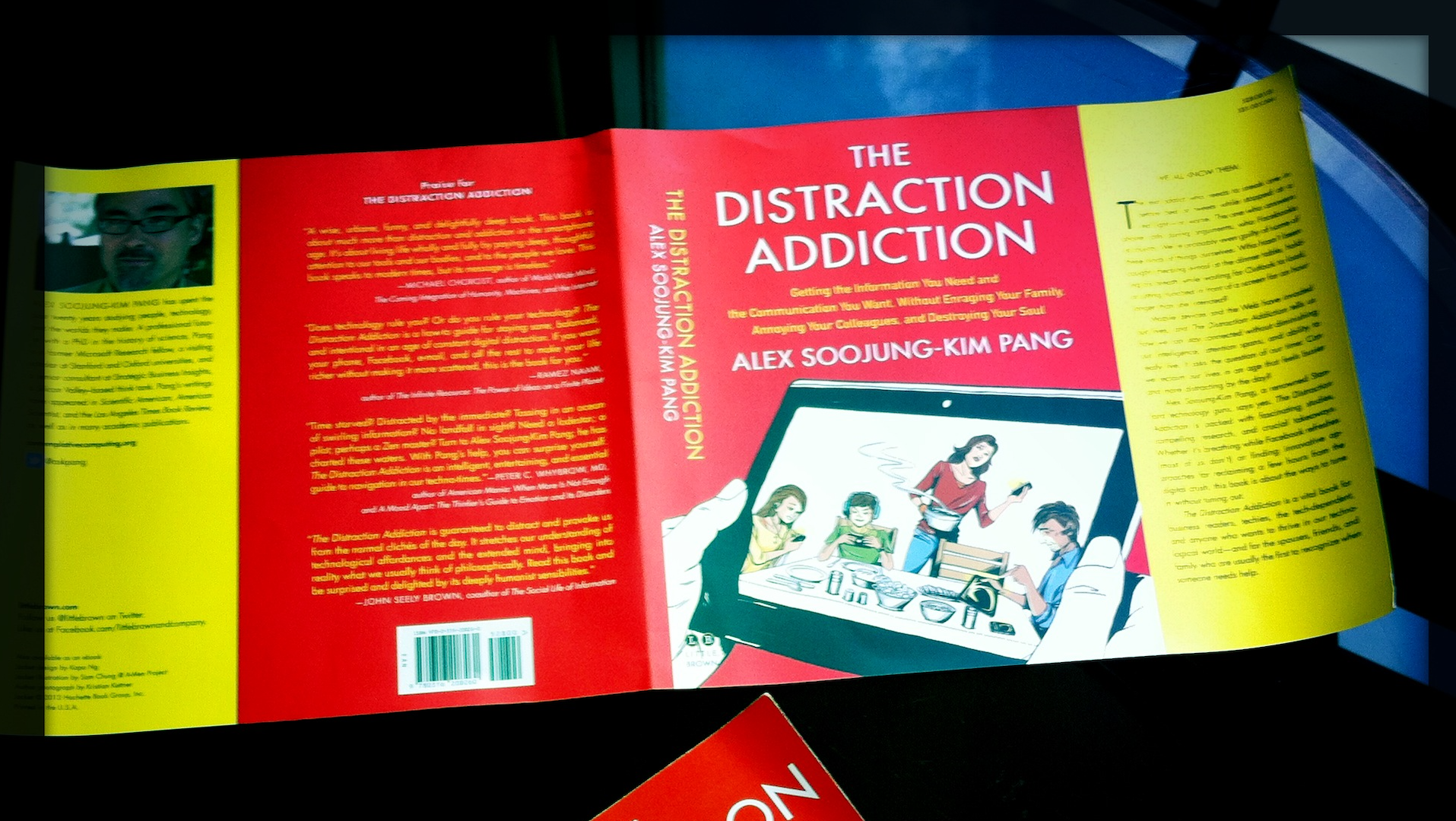THE DISTRACTION ADDICTION was published by Little, Brown and Co. It’s my second book, and the first volume in a trilogy (continued by REST and SHORTER) that explores the relationship between technology, psychology, and work.
THE DISTRACTION ADDICTION makes the argument that our difficult relationships with digital devices reflects our deep human capacity to transform ourselves through technology. Humans have evolved to use technologies to extend our cognitive and physical abilities, and we derive a lot of pleasure from learning to use technologies well.
The tech industry’s strategies for capturing and commodifying our attention have short-circuited that process. Rather than mastery and flow, social media and games all too often offer us diversion and distraction.
However, there’s a way out. By learning to practice what I call “contemplative computing,” we can reclaim our attention, learn to spot and overcome the techniques companies use to divert us, and use technologies the way we want.
THE DISTRACTION ADDICTION was widely reviewed and garnered lots of good press when it came out in 2013. Publisher’s Weekly said,
Pang’s methods will be familiar to readers of other time-management manifestos, but he successfully renders them concrete, practical, and contemporary. His history of technology is also fascinating, drawing from sources far removed from the digital sphere. Pang’s tome is a valuable resource for anyone seeking to take control of his or her digital life, and it’s a great primer on the interplay between mind and tech.
The Washington Post’s Lisa Zeidner said:
The Distraction Addiction is not framed as a self-help book, despite the clunky how-to subtitle. It’s a thoughtful examination of the perils of our computing overdose and a historical overview of how technological advances change consciousness. A “professional futurist” with a doctorate in the history of science, Pang urges an approach that he calls “contemplative computing.” He asks that you pay Zen-like attention to “how your mind and body interact with computers and how your attention and creativity are influenced by technology.”…
Pang doesn’t advocate returning to a pre-Internet world, some Eden of pure solitude, complete with birdsong. “If the Buddha was alive,” one of his interview subjects notes, “would he use Facebook or blog? I think he would.” Instead, he asks you to “take a more ecological view of your relationships with technologies and look for ways devices or media may be making specific tasks easier or faster but at the same time making your work and life harder.”
Evgeny Morozov said nice things about it in The New Yorker:
Alex Pang’s The Distraction Addiction… brims with suggestions for how to embrace “contemplative computing,” a mindful approach to digital technology that could buy an impressive supply of Kracauerian boredom. Instead of shunning the technological in pursuit of the mythical authentic experience, Pang wants to use technology to clean up the mess it created. “The Distraction Addiction” is a paean to various tools for blocking or limiting our Internet connectivity: tools with names like Freedom, Chrome Nanny, and StayFocusd. Running such software on your computer is the equivalent of drawing the curtains in Kracauer’s living room.
THE DISTRACTION ADDICTION has been translated into a number of languages, including Chinese, Dutch Spanish, and Arabic.

